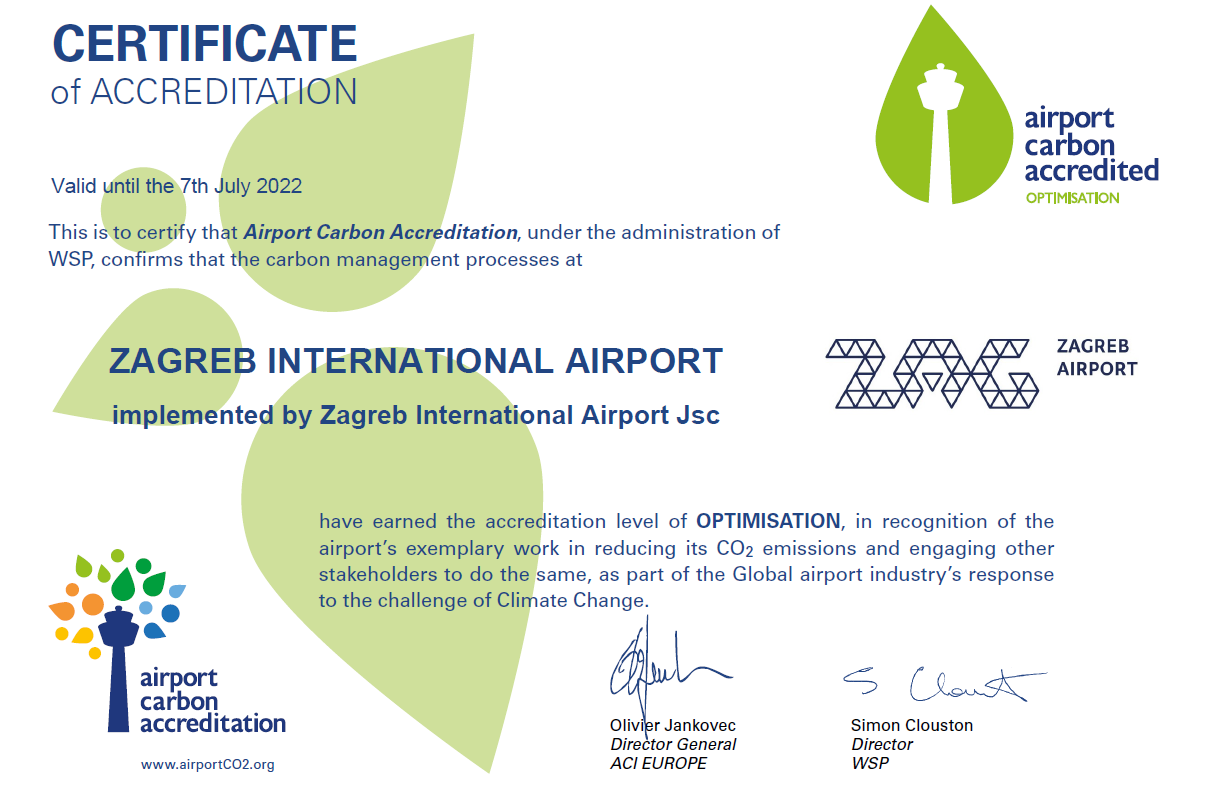First Croatian Airport: CO2 Reduction at Zagreb Airport Recognized with ACI Level 3 Certificate
August 17, 2021 - CO2 reduction at Zagreb Airport has been recognized with an Airport Council International level 3 certificate, confirming the management and reduction of CO2 emissions in everyday airport activities
Zagreb International Airport has received a certificate from ACI (Airport Council International) confirming level 3 of management and reduction of CO2 emissions in everyday airport activities, reports HRTurizam.
According to the classification of the global ACI ACA program (Airport Carbon Accreditation), this level is called "Optimization." Therefore, it represents a significant step towards fulfilling the commitment of Zagreb Airport to achieve zero CO2 emissions by 2050.

Based on the submitted data, the program independently assesses and recognizes the efforts of airports in managing and reducing carbon emissions. The program for measuring this level of certification also includes all stakeholders and business partners of the airport (airlines, various tenants, catering, shops, etc.), whose activities within the airport affect CO2 emissions.
Franjo Tuđman Airport is the first airport in the Republic of Croatia to reach ACI-ACA level 3, resulting from an extensive program of various activities in recent years aimed at reducing carbon emissions.
“Zagreb International Airport is committed to implementing business solutions that aim to reduce negative environmental impacts. Achieving level 3 according to the ACI-ACA classification is a significant step in these efforts. Our goal and commitment in the airport's business activities is to reach zero CO2 emissions by 2050, and we will be persistent on that path, ” said Huseyin Bahadir Bedir, President of the Management Board of MZLZ d.d.
In recent years, the airport has introduced a wide range of energy management measures that have enabled it to monitor and reduce total energy consumption, such as the installation of efficient LED lighting, reconstruction of low voltage in substation 2, boiler room reconstruction, reconstruction and modernization of heating/cooling substation in the administration building, and the production of hot water using solar collectors. Thanks to all these activities, carbon emissions at the airport were reduced by 4% between 2017 and 2019, despite a significant increase in passengers in that period.
The plan is to build a photovoltaic power plant that will directly convert solar energy into electricity and replace existing vehicles and equipment in an environmentally friendly way.
For more, follow our lifestyle section.


